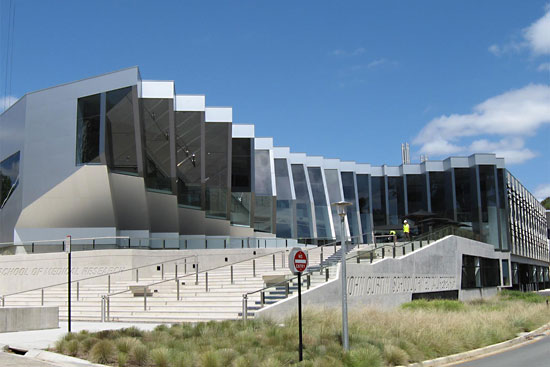ANU Envisions In Shaping Safer Tech Future
How Australia and the world can safely navigate and steer the profound impact new technologies, including artificial intelligence (AI), have on our lives is the focus of a first-of-its-kind school at The Australian National University (ANU).
Officially launched today, the ANU School of Cybernetics provides unrivalled teaching and research that pioneers a new approach to engineering and technology design.
School Director, ANU Distinguished Professor Genevieve Bell, said the School nurtures and trains a new generation of critical thinkers and practitioners who can navigate our increasingly complex world and who are committed to ensuring safe, sustainable and responsible technology futures.
“We are working hard, in everything we do, to help transform the way society engages with technology,” Distinguished Professor Bell said.
“We want to help ensure that everyone can participate in building our future. And we want to find new ways to think about and talk about the role of technology in our lives. Here at the ANU School of Cybernetics we are dedicated to helping lead and enrich this vital conversation.
“We are drawing on the rich history of cybernetics globally, and reimagining it for our 21st century challenges. We want to make sure we can successfully navigate major societal transformations.”
The ANU School of Cybernetics offers the Master of Applied Cybernetics, a PhD program that recruits students as a cohort, and a series of microlearning experiences for organisations, communities and individuals.
The School’s research program investigates how emerging cyber-physical, technological systems – such as robotics, digital voice assistants, and autonomous systems – operate across a range of settings and sectors including the creative industries, marine sciences, agriculture and climate change research.
Distinguished Professor Bell said another key focus of the School was examining who is building and managing our AI-enabled future.
“We need to develop the ability to respond quickly to changing situations and complex systems and many, diverse voices must be involved in making those decisions and building new knowledge,” she said.
“The last few years have demonstrated, very clearly, that we need to tell better stories about the future, stories that are more equitable, fair and just, and that equally we need to work actively in the present to make those stories not just possible but true.”
To help launch the School, an inaugural curated exhibition featuring more than 100 historical and contemporary pieces is on display until 2 December in the award-winning Birch Building on the ANU campus.
From the world’s first computer graphics, animations, special effects, and electronic music, Australian Cybernetic: a point through time explores 50 years of technology and creativity in computing that have influenced the technology, cinema, gaming and television we know today.
The collection of interactive, immersive and provocative creations also includes an Emmy Award-winning virtual reality film; an acclaimed installation examining the resources, human labour, and algorithmic processing of a virtual assistant technology system; and a kinetic sculpture named ‘Albert’ that has been delighting audiences for 54 years, among many other displays.
Andrew Meares, cybernetic futures lead at the School, said the exhibition speaks firmly to the School’s approach of observing the past to help shape a course for the role of technologies in today’s world.
“For the first time, historic, contemporary, and conceptual cybernetic works are being brought together in a unique exhibition,” Mr Meares said.
“We’re inviting people to take a tour through time and learn about the history of technology and art and how this contributed to cybernetics and the multimedia, tech and music we enjoy today.”

